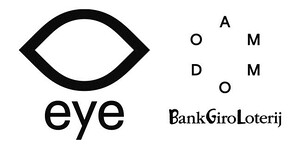Tacita Dean, João Maria Gusmão & Pedro Paiva, Rosa Barba, Sandra Gibson & Luis Recoder
September 17, 2016–January 8, 2017
The artists in the international group exhibition Celluloid work with 16mm and 35mm film, and reflect on the material’s qualities and those of the so-called film apparatus. In an era of rapid, near omnipresent digitization of the moving image, these artists focus our attention on the remarkable properties of analogue film material and the accompanying film equipment. They emphasize the unsurpassed power of the projected image, breathe new life into tangible celluloid, and are fascinated by the aspect of time expressed through celluloid.
Until very recently, film and celluloid were inextricably linked. For over a century, celluloid formed the basis of everything we called film or cinema. From the early films of Meliès and Eisenstein, to Orson Welles’ Citizen Kane and the Technicolor of The Wizard of Oz, or the French Nouvelle Vague and the films of Scorsese. Today, however, all images have become digital, a series of zeroes and ones on a hard disk. The artists in Celluloid work with the analogue medium, not out of nostalgia, but because they are convinced of its remarkable qualities. For a digital sequence of images differs fundamentally from a moving image on celluloid.
The unconventional and layered film installations and “film sculptures” by Tacita Dean, João Maria Gusmão & Pedro Paiva, Rosa Barba and Sandra Gibson & Luis Recoder are not only made of and with celluloid, but they also reflect on analogue film and the way in which it is created and becomes an image. That is also why they reintroduce projectors and accompanying loop systems into the gallery space.
Rosa Barba (1972) is interested in the immanent aspects of film: how the projector functions, the sound, the materiality of the medium itself, the text, and how these aspects transform the space, modify perception and become an integral part of the exhibition. She sees the various aspects of the film medium as separate elements, each available for her to utilize individually.
Tacita Dean (1965) was also gripped by the mediaspecificity of analogue film, which translates for her into the magic of the projection in the dark, the materiality of the film strips, the exceptional quality of the colour, tone, depth and contrast and the element of time. Dean’s installation FILM, showing at the exhibition and originally developed for the huge Turbine Hall at Tate Modern in 2011, is an experimental film on 35mm projected from an anamorphic lens in a portrait format. Dean made the film partly as a statement, not only to invigorate debate about the threat film is under, but also to stand as a testament to the distinctive qualities of the medium.
Portuguese artistic duo João Maria Gusmão and Pedro Paiva (1979, 1977) use 16mm and 35mm celluloid film to create multi-layered installations in which multiple projectors—a key element in the installation—display short films in shifting constellations. The films, frequently no more than a few minutes long, generally display ordinary, unexceptional events from daily life in such a way that they reveal the poetry or magic of life. Drawing on wide-ranging sources of inspiration varying from pre-Socratic philosophy and the optical studies of Isaac Newton to the science fiction of Stanislaw Lem, Gusmao and Paiva create short “poetic-philosophical narratives,” as they themselves call them.
Sandra Gibson and Luis Recoder (1968, 1971) are expanded cinema artists who not only create film installations and sculptures, but also give live film performances. In these performances, Gibson and Recoder manipulate the film projector, or multiple projectors, using crystal glass, colour gels, found footage, masking devices, humidifiers and other mechanisms. In such performances, watching a film in a normal cinema becomes a near-sensual, three-dimensional experience.
Curated by Jaap Guldemond in collaboration with Marente Bloemheuvel.
The exhibition is supported by an extensive programme in the cinemas.
Accompanying the exhibition is a lavishly illustrated book entitled Celluloid, published by EYE and nai010, designed by Joseph Plateau. With essays written by Mark Nash, Cristina Cámara Bello, John Hanhardt, Marc Glöde, Jaap Guldemond and Philippe-Alain Michaud.


